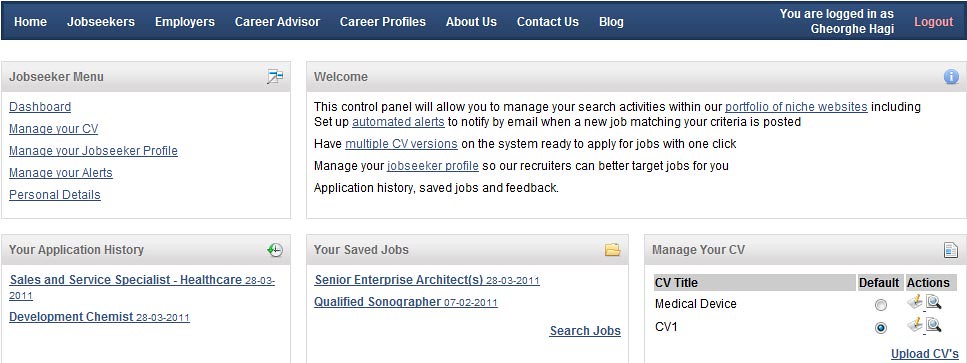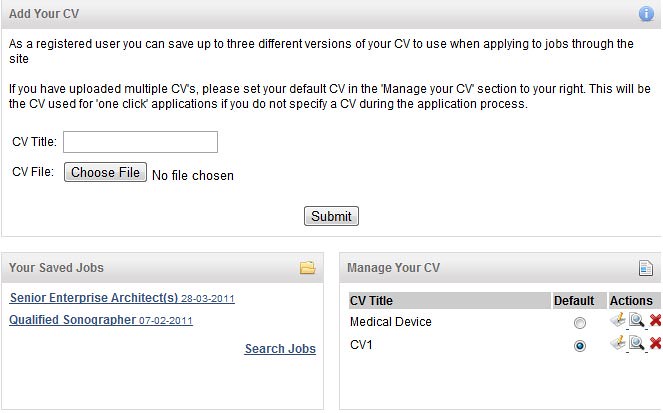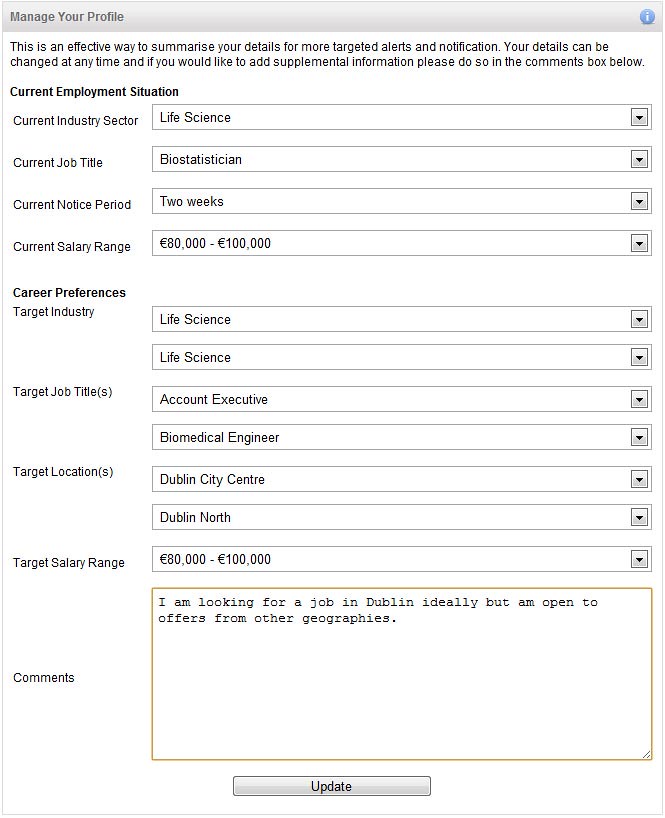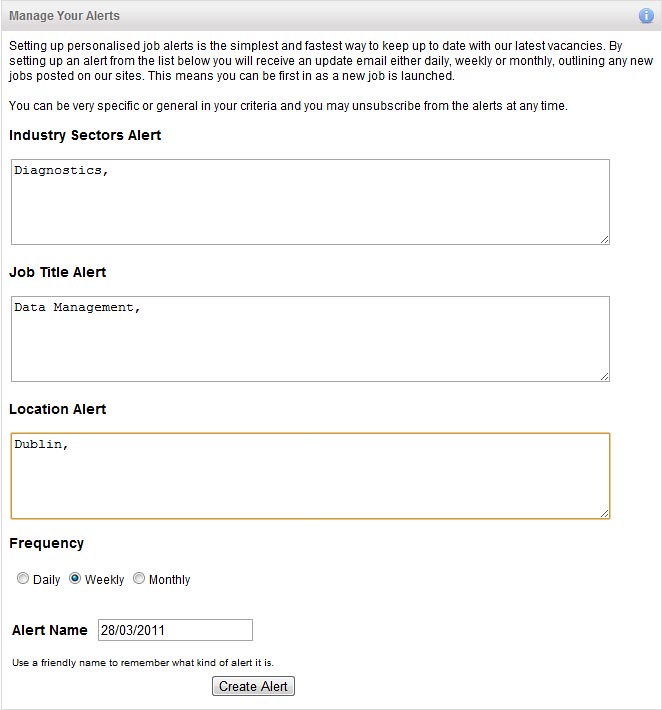 Eamonn O’Raghallaigh is Head of Technical Operations and co-founder of Life Science Recruitment (www.lifescience.ie), a specialist scientific recruitment consultancy based in Dublin. Trained as a neuroscientist and pharmacologist, and a self-confessed science nerd, Eamonn is a keen follower of the latest trends in science research. He now gives us a flavour of what’s hot in science at the moment.
Eamonn O’Raghallaigh is Head of Technical Operations and co-founder of Life Science Recruitment (www.lifescience.ie), a specialist scientific recruitment consultancy based in Dublin. Trained as a neuroscientist and pharmacologist, and a self-confessed science nerd, Eamonn is a keen follower of the latest trends in science research. He now gives us a flavour of what’s hot in science at the moment.
1. Search for the ‘God Particle’ – the Higgs Boson
OK, so we’ve all seen Brian Cox captivating spellbound audiences with his silver tongue on the BBC, and alluding to the search for the God particle – a.k.a. the Higgs boson. So what exactly is this ‘God particle’ and if it finally is discovered what will change?
The Higgs boson is a hypothetical elementary particle that is predicted to exist by the Standard Model of particle physics and its existence, in simple terms, will explain why fundamental particles such as quarks and electrons have mass. The particle was nicknamed the ‘The God Particle’ by Leon Lederman, an American experimental physicist and Nobel Prize laureate because of the particle’s crucial role in the fundamental workings of physics in the 21st century, combined with its amazing elusiveness.
Physicists have spent years yearning to catch a glimpse of the particle, so much so that they spent $10 billion on the Large Hadron Collider at CERN, a particle accelerator just outside Geneva in Switzerland. After years of toil, it looks like they are finally close to finding the ‘god-damn-it” particle (nicknamed so by some physicists as they tend to pull their hair out in frustration in attempts to capture it), and in December 2011 there was a flurry of activity in CERN as data resembling the Higgs Boson was captured. If future data planned to be gathered later this year corroborates the finding of last December, capturing the Higgs will likely be regarded as one of the 21st century’s great discoveries.
2. The Ultimate Anti-Aging Cream
The holy grail of cosmetics; the mythical fountain of youth – well it now seems likely that we are close to discovering the ultimate anti-aging formula. Well, maybe not; but at least there is a theoretical basis for gene therapy in medicine now aimed at slowing and reversing the aging process as well as impacting on the processes of diseases such as Cancer.
Scientists in Harvard Medical School have discovered a genetic mechanism which allows them to artificially age, and then rejuvenate laboratory mice. Thus, it is theoretically possible to reverse some of the effects of the aging process in mammals. They achieved this by creating a genetic switch on the gene that controls the expression of telomerase, an enzyme that controls the repair of Telomeres (repetitive strands of DNA that protect the ends of chromosomes), which are critical in the aging process, as well as being implicated in Cancer. This research has the potential to yield significant advances in the treatment of diseases such as malignancies and age-related illnesses in the future.
3. So Time Travel is Possible?
Well maybe, but unlikely, according to the majority of the physics community. In September 2011, researchers from the OPERA collaboration caused a stir in the scientific community when they announced that they had measured neutrinos (small sub-atomic particles) that appeared to travel faster than the speed of light. Poor Einstein would be turning in his grave at the news; this would not only violate his theory of special relativity, but also it would rock the fundamental foundations of theoretical physics.
However, the majority of the scientific community view the results dubiously and indicate that there must be some anomaly in the findings. Physicists are now scrambling to independently replicate the experiment later this year; which involves firing neutrinos at a detector hundreds of miles away and measuring the time taken for the journey. Once replicated and depending on the results, physicists will either breathe a sigh of relief or will enter a phase of mass group hysteria; adding a new meaning to the term ‘uncertainty’ in science.
4. Search for Extrasolar Planets in the Goldilocks zone
Everyone is talking about it – in the press, in the media and all over the TV at any opportunity – ‘are we alone?’ Well the hunt for planets outside our solar system that may be able to support life took a leap forward last December when astronomers at NASA’s Ames Research Center announced that they had found the best candidate yet for a planet outside our solar system which could potentially support life.
The planet, affectionately named Kepler-22b after the telescope it was first spotted by, is right bang in the middle of the proposed habitable zone of its star – the ‘Goldilocks Zone’. Although not much is known about the composition of the planet (its 600 light-years away, that’s 3.5 x 1015 miles), it is 2.4 times the size of the earth and orbits its sun every 290 days. If it has a surface, scientists think the surface temperature would be somewhere around 210C – perfect for life.
The search continues and one day we may indeed find the perfect extrasolar planet – one which has life on it (detected by the presence of oxygen and other by-products of life in the atmosphere); the problem is getting there or even saying hello.
5. Human Stem Cell Research
Major controversy still surrounds the use of human embryos as a source of stem cells, however in recent years scientists have finally cracked the problem and are now able to manufacture an almost limitless supply of stem cells in the lab without destroying embryos. This limitless supply has opened the flood gates for stem cell research, allowing researchers to develop novel therapies for conditions such as blindness and Parkinson’s disease to effective treatments for spinal cord damage.
Stem cells are found in all multicellular organisms, and they can divide and differentiate into many different specialized cell types, effectively they are a ‘wildcard’ cell. If inserted into the human body, they tend to change into the cells that surround them. This has wide reaching implications for medicine and research is now underway across the globe to find effective treatments for conditions such as Amyotrophic Lateral Sclerosis (which has special significance here in Ireland as Prof. Orla Hardiman in Beaumont Hospital is regarded as one of the world’s leading researchers in the field), damage to the heart after a heart attack, blindness, deafness, skin disorders, arthritis, Alzheimer’s and Parkinson’s to name but a few. Watch this space; it is the future of medicine.
6. Quantum Computing
The revolution of quantum physics may soon be about to pay off with the advent of quantum computers, a term that has been bandied about for some years now. The promise of super fast computers, performing certain calculations billions of times faster than any silicon-based computer and which that may even surpass the human brain in raw computing power, may not be too far away. Late last year another milestone in the race to develop the first practical quantum computer was made when a team at the University of Bristol’s Centre for Quantum Photonics developed a microchip which manipulates and measures entanglement and mixture, two quantum phenomena which are fundamental principles in quantum computing.
The major potential applications of quantum computing are in cryptography and communications; however the potential for developing the first artificial intelligence is now within the grasp of reality.
7. Can Arsenic really be a Building Block of Life?
The element Arsenic, historically labelled the Poison of Kings due to its popularity as a poison of the ruling classes in disposing of each other, is highly toxic to all known life on Earth, or at least that’s what we thought up to a couple of years ago.
NASA scientists have discovered a new microbe in the hostile Mono Lake in the USA that uses the deadly poison Arsenic as a component in its biochemical machinery instead of Phosphorus causing a shake up in the way scientists have traditionally thought about the biochemistry of life.
Traditionally, the six basic building blocks of all life on Earth were Carbon, Hydrogen, Nitrogen, Oxygen, Sulphur and Phosphorus, with a dusting of trace elements thrown into the mix. The new discovery sees Arsenic replace Phosphorus as an element of the structural backbone of DNA in the microbe, paving the way for a change in how scientists view the possibility of life in once-thought hostile environments. If a microbe can build a deadly poison into its biochemical processes, who is to say that other organisms don’t exist in the most hostile parts of the solar system, using elements we regard as toxic in their fundamental biochemistry.
8. What’s up with the Weather these Days?
It’s hard for any of us to dismiss noticing the subtle changes in the weather patterns of the last twenty years or so (well, for anyone over thirty, that is). However on a more serious note, recent evidence from climatology researchers has shown a disturbing trend – the Antarctic and Greenland ice sheets are melting at an ever faster rate than once thought, making them the greatest single contributor to rising sea levels.
The study, performed over a period of nearly twenty years showed that in 2006 the Greenland and Antarctic ice sheets lost a combined mass of 475 gigatonnes (one billion tonnes) a year on average and that the pace of loss was found to be accelerating rapidly over the period of the study. They predict that at the current rate of melting, the global sea level could rise by 32 cm (over 1 foot) by 2050. With the ever increasing power of supercomputers, climatologists and meteorologists are busy modelling the changing weather patterns in an attempt to see how the reality of global warming will impact the environment of the future, the near future that is.
9. So now we become the Grand Architect
One of the spin offs of the multiple genome projects over the last ten years has been an intimate knowledge of how the base pairs on DNA combines in sequence to form life. This challenged geneticist J. Craig Venter, one of the main players in the human genome project, to put his architectural skills to task in an attempt to create synthetic life. In 2010, he succeeded in creating life in the lab by combining the 582,000 base pairs required for the complete genome of the new bacteria, proposed to be called Mycoplasma laboratorium. This paves the way for the genetic engineering of bacteria to perform tasks such as the manufacture of biopharmaceuticals and bio-fuels. Who knows we may even be able to create bacteria designed to kill other bacteria.
10. Medicines made just for You
Personalised medicine, or pharmacogenomics to the geeks among us, is fast becoming one of the hottest areas of research in therapeutic medicine, with the promise of more effective therapies for a range of debilitating and terminal conditions. Personalised medicine is based upon the premise that drugs acts differently in different people due to genetic variation. With the advent of the human genome project, and the revolution in diagnostic testing, researchers can now tailor drug regimens for individuals with a high degree of accuracy, leading to a significant increase in therapeutic effectiveness.
The most notable application of personalised medicine will be in the treatment of Cancer – instead of treating Cancer with an ‘one size, fits all’ approach as with chemotherapy, clinicians will be able to identify the genetic basis of the tumour and design a treatment regimen based upon this. The costs of diagnostic testing and the lack of current available drugs prohibit the widespread use of personalised medicine at the moment, however in the coming years a raft of new biopharmaceutical therapies will be coming onto the market, the culmination of over thirty years of research, heralding the field of pharmacogenomics into mainstream medicine.









